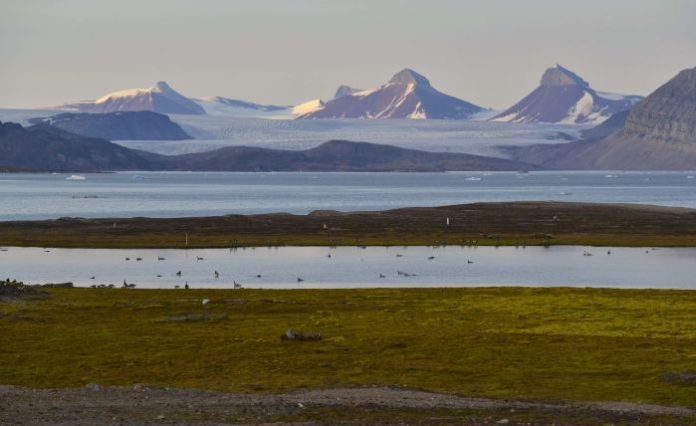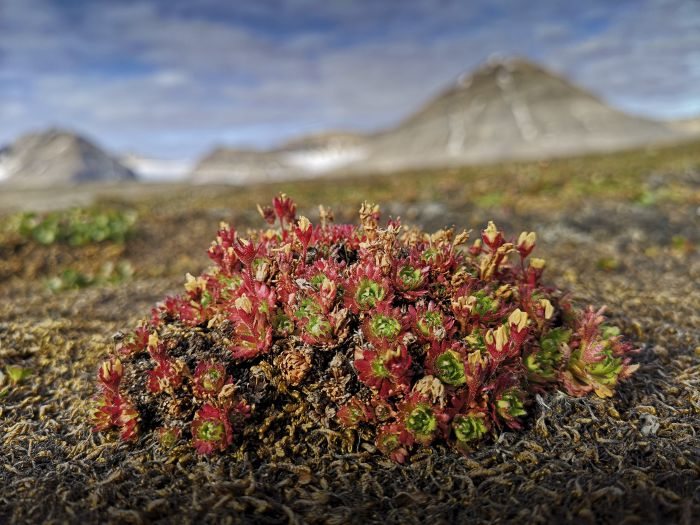
Not only solar radiation and temperature. In the Arctic tundra, soil moisture and the abundance and type of vegetation control the exchange of CO2 between soil, vegetation and atmosphere. This is the conclusion of a study carried out by a research team from the Institute of Geosciences and Georesources of the National Research Council (CNR-Igg) and published in the journal Scientific Reports.
The researchers analysed measurements of carbon dioxide fluxes in the Arctic tundra on the island of Spitzbergen (Norway), in the Bayelva stream basin, not far from CNR’s Dirigibile Italia Arctic station, and identified the climatic and ecological variables on which these fluxes depend.
“Our study shows that temperature and solar radiation are not enough to explain the intensity of CO2 fluxes,” explains CNR-Igg researcher Marta Magnani, first author of the paper, who participated in measurement campaigns and developed a mathematical model of carbon dioxide fluxes during her PhD. “Soil moisture and the abundance and type of vegetation play a major role. Climate change in the Arctic could lead to important changes in the balance of carbon fluxes. Rising temperatures favour more intense respiration of vegetation and soil, increasing CO2 emissions, but also a lengthening of the growing season and a possible expansion of species with greater photosynthetic capacity, which would lead to greater absorption of atmospheric CO2 and thus a decrease in its concentration. Whether the Arctic tundra will be a source or sink of CO2 will depend on which of these two factors becomes dominant’.
“The data were obtained using a portable spectrophotometer called IRGA (Infra-Red Gas Analyser), which, thanks to the possibility of measuring gas fluxes at different points in the tundra, allowed us to analyse the role of different plant species and to compare the fluxes of vascular plants (i.e. equipped with a system of vessels to conduct water) with those of mosses and lichens”, continue Mariasvia Mariamberini and Ilaria Baneschi of Cnr-Igg, who spent several months in the Arctic between 2018 and 2011, with those of mosses and lichens,” continue Mariasilvia Giamberini and Ilaria Baneschi of CNR-Igg, who spent several months in the Arctic between 2018 and 2021, also playing the role of “station leader” at the Italian base.

“Studies such as ours are needed to explore climate processes in detail, to be able to develop predictive models that are valid across large areas of the Arctic tundra and allow us to estimate whether the net balance will go towards greater emissions or greater local absorption of CO2,” says Antonello Provenzale, director of CNR-Igg.
The research group’s next steps will be to analyse the winter dynamics of CO2 fluxes in the Arctic, including measurements in the snowpack, and to use satellite data combined with ecosystem models to extend estimates of possible changes to wider regions of the tundra. “Our group is especially interested in changes in the ‘critical zone’, i.e. that thin life layer that includes soil, vegetation, microbiota, soil fauna and surface and groundwater, and which supports the functioning of terrestrial ecosystems. For this reason, we study the dynamics of the critical zone in extreme environments such as the Arctic, the high Alps and volcanic areas such as the slopes of Mount Etna,’ Provenzale concludes.



































